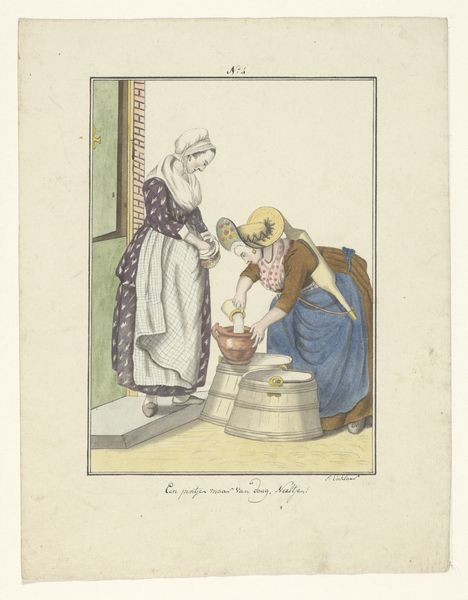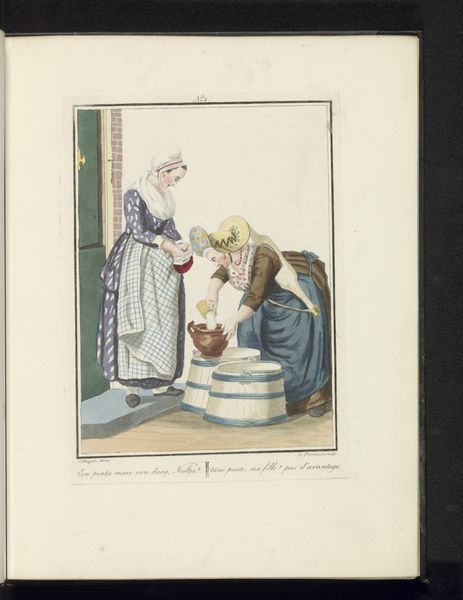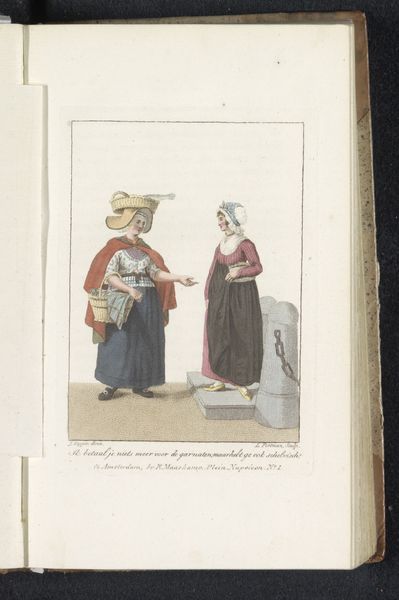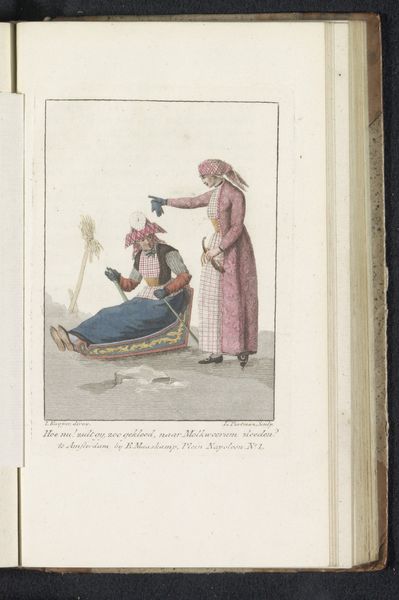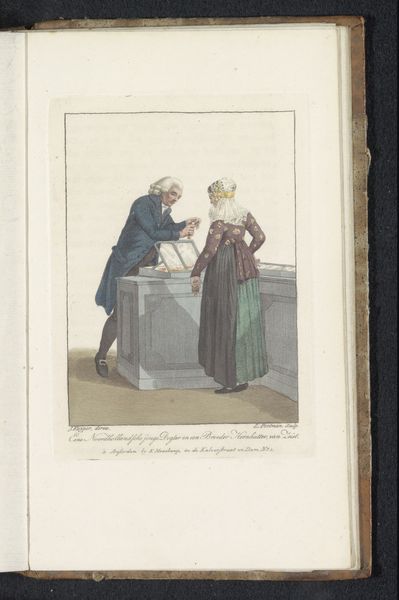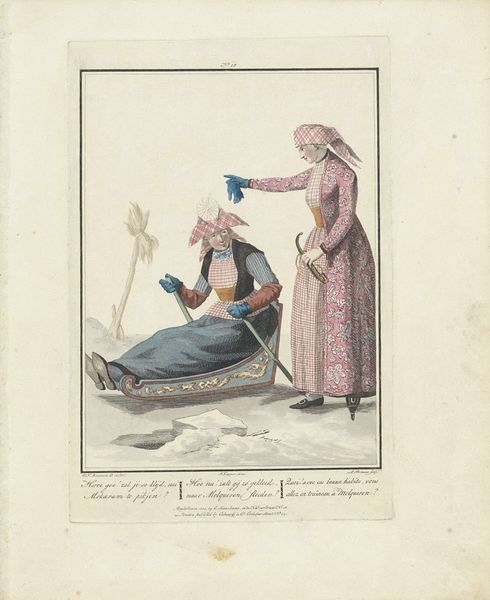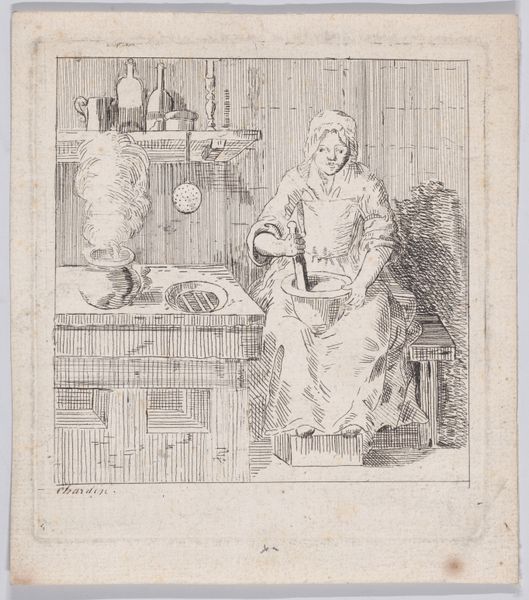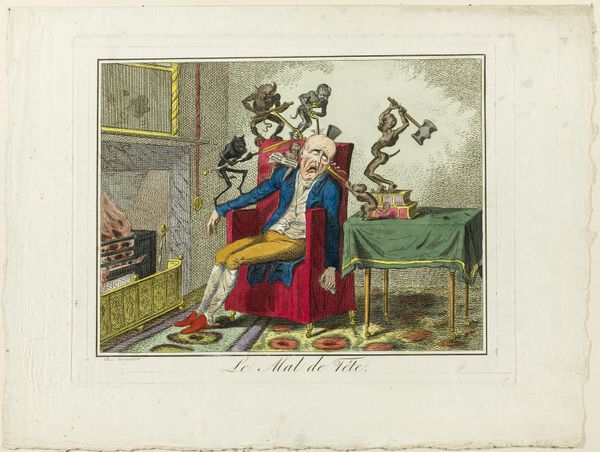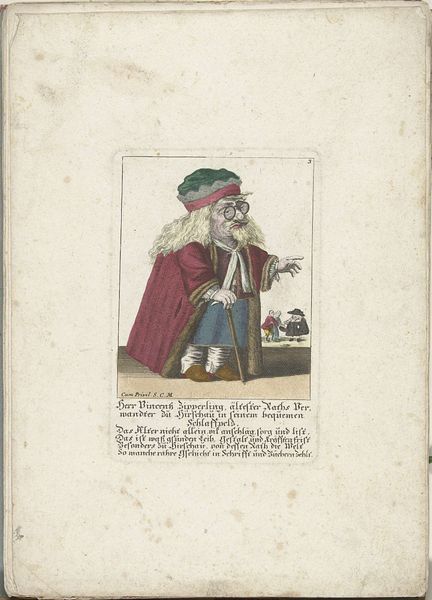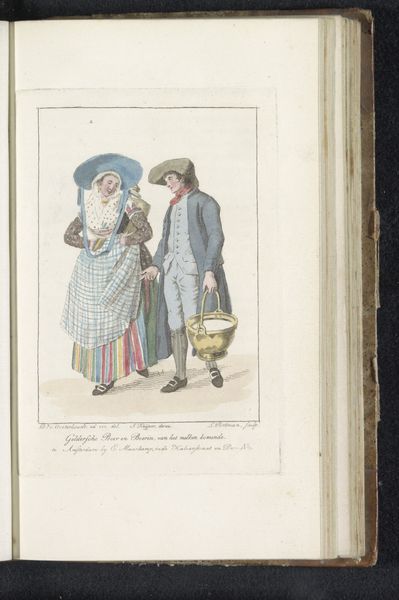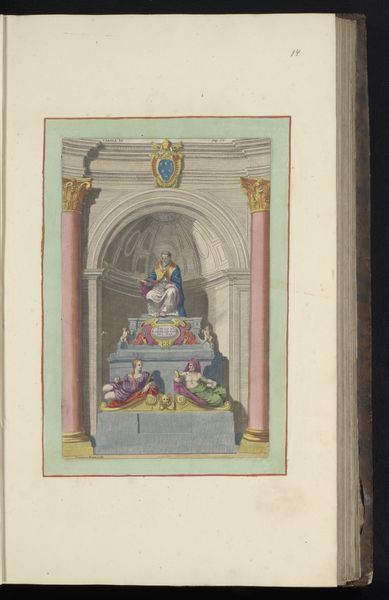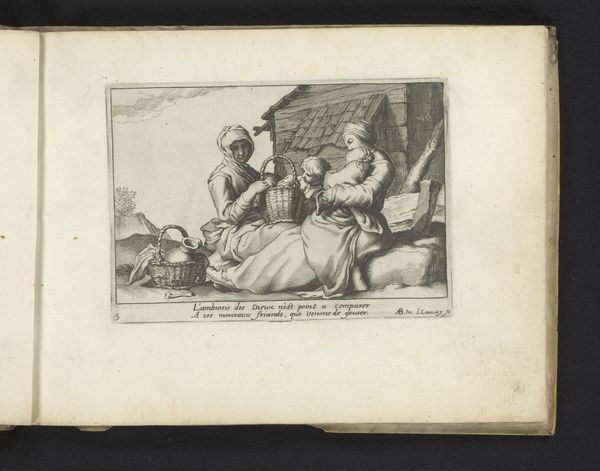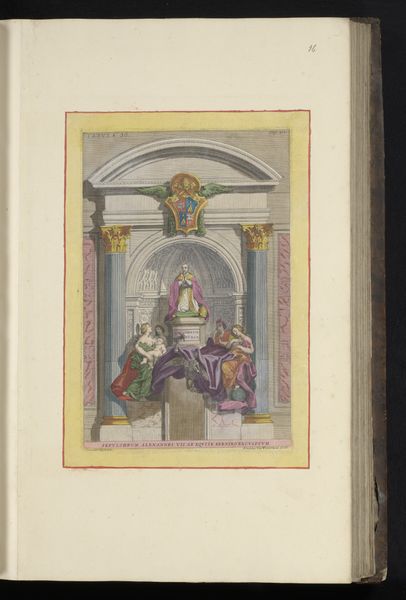
drawing, paper, watercolor
#
drawing
#
neoclacissism
#
paper
#
watercolor
#
coloured pencil
#
genre-painting
#
mixed media
#
realism
Dimensions: height 125 mm, width 90 mm
Copyright: Rijks Museum: Open Domain
Curator: I’m immediately drawn to the soft, domestic serenity radiating from this image. Editor: Agreed, there’s a quiet dignity to the everyday. This piece, "Dienstmeisje en melkverkoopster" – or "Maidservant and Milkmaid" – was crafted around 1806 by Ludwig Gottlieb Portman, rendered in watercolor and colored pencil on paper. The Rijksmuseum holds this work in its collection. Curator: The scene seems poised between stillness and action, a study of labor and class relations rendered in delicate detail. Look at how the artist highlights the textures and tones of simple garments. This isn't a grandiose historical painting; it centers the working woman, an emblem of quiet strength. Editor: I find myself thinking about the context: Neoclassicism, which often overlooked these lived realities, coincided with burgeoning social inequalities as rural populations migrated to cities. Portman, with this gentle realism, inadvertently acknowledges an important chapter of marginalized experiences. Curator: True. Yet, for me, beyond its socioeconomic echoes, the drawing taps into the deeper archetype of nurturing. Milk itself is one of the most enduring symbols for motherhood and life, echoed in mythologies from across cultures and centuries. Notice the milkmaid’s intent gaze downward as she is captured during an act of service. Editor: Indeed, it’s easy to romanticize these older ways of life, though we have to reckon with gendered division of labor inherent in her very role. Her downward gaze—is that reverence for craft, or quiet compliance within societal strictures? Also note the material status discrepancy implied here, evidenced in the maidservant standing by. Curator: Such layering speaks to its enduring power. In her posture, is she anticipating her work, or taking direction in the hierarchy between two laborers, despite the difference in roles? Perhaps the women see dignity not in the material labor, but how their roles benefit the domestic system of the time. Editor: Portman gives us much to contemplate within this understated visual, prompting considerations about power, sustenance, labor, and daily rituals of life that carry a multitude of narratives. Curator: In essence, art becomes an open window to a world filled with meanings, both seen and felt. Thank you for pointing out these various narratives.
Comments
No comments
Be the first to comment and join the conversation on the ultimate creative platform.

